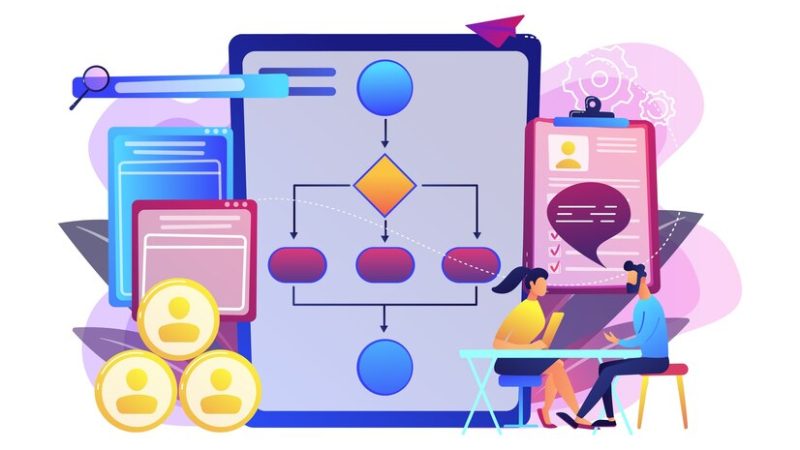Customer service has undergone a significant transformation over the years, evolving from a simple phone call or in-person interaction to a multifaceted, omnichannel experience. In the digital era of 2024, the landscape of customer service is vast and encompasses various platforms, technologies, and strategies to meet the diverse needs and expectations of consumers. This article explores the definition of customer service, its importance, differentiating terms, types, and the key elements of great customer service in the current year.
What is Customer Service?
Customer service is a comprehensive term that refers to the assistance and guidance a company provides to individuals before, during, and after purchasing a product or service.
It is an ongoing action taken to support customers throughout their entire journey and interaction with a brand. No longer confined to phone calls, customer service now extends to email, social media, websites, SMS, in-person support, and even traditional postal mail.
Clearly, defining customer service goals at the start cultivates a smooth and positive customer experience, contributing to satisfaction, brand loyalty, and revenue growth.
Customer Service vs. Customer Support vs. Customer Aftercare
Although frequently used interchangeably, these terms carry nuanced distinctions. Customer service serves as the overarching concept that embraces the entirety of the customer journey, spanning pre-sales, sales, and post-sales assistance. On the other hand, customer support specifically targets technical aid following a purchase, dealing with tasks such as installation and troubleshooting. Customer aftercare or customer care is broader, involving ongoing communication and actions to ensure customer satisfaction beyond technical support.
Types of Customer Service in 2024
In the digital age, the ways customers connect with brands have expanded. Various types of customer service include:
- Social Media: Respond to inquiries and complaints on platforms like Twitter, Facebook, and Instagram for immediate communication.
- Chatbots: AI-powered tools providing quick answers and efficiently directing customers to human representatives.
- Self-Service: Customers find answers independently through FAQs, online resources, and product tutorials.
- SMS/Mobile: Offering service and support via text messages, catering to the preferences of younger generations.
- Phone: While less dominant, phone support with Interactive Voice Response (IVR) and AI remains a valuable option.
- Email Support: Responding to customers via email, providing a formal and detailed channel for communication.
- In-Person (Traditional, In-Store): Offering live human support and enhancing customer relationships through face-to-face interactions.
Being Customer Service Oriented in 2024
Being customer service-oriented means prioritizing customer needs over business interests. It involves consistently improving customer focus and satisfaction at every stage of the customer’s journey. A customer service-oriented business emphasizes friendliness, helpfulness, empathy, and effective issue resolution. Service-oriented agents exhibit a positive attitude and eagerness to provide the best possible service to customers.
Customer Service Stats
Data supports the importance of great customer service.
- More than half of consumers expect a response within an hour, even on weekends.
- 76% of consumers believe companies should understand their expectations and needs.
- Email is the most commonly used customer service channel, with 54% of consumers using it.
- 33% of consumers end their relationship with a company due to a lack of personalized experience.
- 43% of millennials contact customer service from a mobile device.
- 79% of younger generations are more willing to buy from brands with a mobile service portal.
Key Customer Service Skills
Effective customer service relies on essential customer service skills that agents should develop –
1. Engage in Active Listening
– Tips: Concentrate on comprehending the customer entirely, refrain from making hasty judgments, inquire for clarification, and respond considerately.
2. Emotional Intelligence (EI)
– Tips: Recognize and respond to customer emotions, cultivate empathy, and effectively manage your own emotions.
3. Flexibility
– Tips: Keep abreast of industry trends, remain receptive to new tools and policies, and approach change with a positive outlook.
4. Tech Proficiency
– Tips: Acquaint yourself with pertinent tools, assist customers in navigating digital processes, and stay informed about advancements in technology.
5. Cultural Sensitivity
– Tips: Appreciate and understand cultural differences, avoid stereotypes, and adapt communication styles based on customer backgrounds.
6. Problem Solving Ability
– Tips: Approach challenges methodically, analyze situations, and provide effective solutions tailored to customer needs.
7. Clear Communication
– Tips: Clearly convey information, avoid ambiguity, and ensure customers understand processes and policies thoroughly.
8. Time Management
– Tips: Prioritize tasks efficiently, minimize customer wait times, and handle multiple inquiries seamlessly.
9. Conflict Resolution
– Tips: Address disputes calmly, empathize with customer concerns, and find mutually acceptable solutions.
10. Forward-thinking Interaction
– Tips: Predict customer requirements, provide support preemptively, and actively explore avenues to improve customer satisfaction.
11. Proficiency in Upselling and Cross-selling
– Tips: Recognize chances to suggest premium or supplementary items, simultaneously boosting revenue and customer contentment.
12. Receptive to Constructive Feedback
– Tips: Embrace feedback gracefully, leverage it for self-improvement, and exhibit dedication to ongoing growth and development.
13. Patience and Resilience
– Tips: Provide each customer the time they need, bounce back from tough interactions, and maintain composure in challenging situations.
14. Data Interpretation
– Tips: Understand and utilize basic data points to improve service delivery, proactively identify trends, and contribute to data-driven decision-making.
15. Personalized Service
– Tips: Understand individual customer needs, provide tailored assistance, and foster a personal connection to stand out in a tech-driven environment.
16. Product/Service Knowledge
– Tips: Acquire thorough knowledge of offerings, confidently address customer concerns, and contribute to a positive overall customer experience.
Conclusion
In 2024, successful customer service requires understanding evolving strategies, technologies, and key skills. Businesses must prioritize customer-centric approaches, embracing diverse channels and innovative methods. Differentiating terms like customer service, support, and aftercare help tailor strategies to meet specific needs. Digital platforms and AI tools reflect diverse customer preferences. Crucial skills include active listening, emotional intelligence, and adaptability. Effective customer service involves prompt issue resolution, proactive support, and personalized experiences. Investments in skill development and technology adoption enhance customer satisfaction and loyalty.








